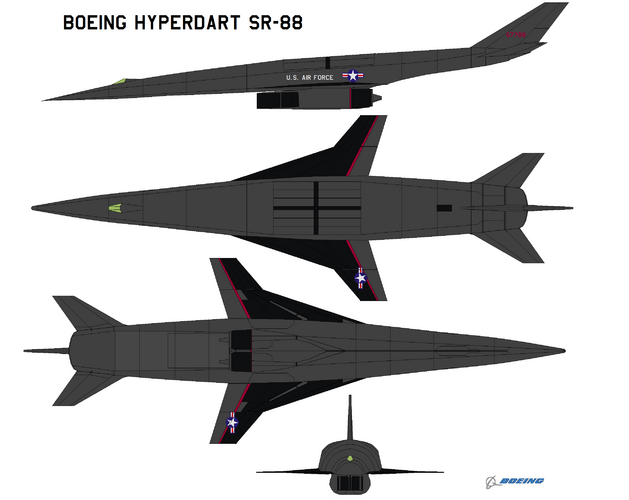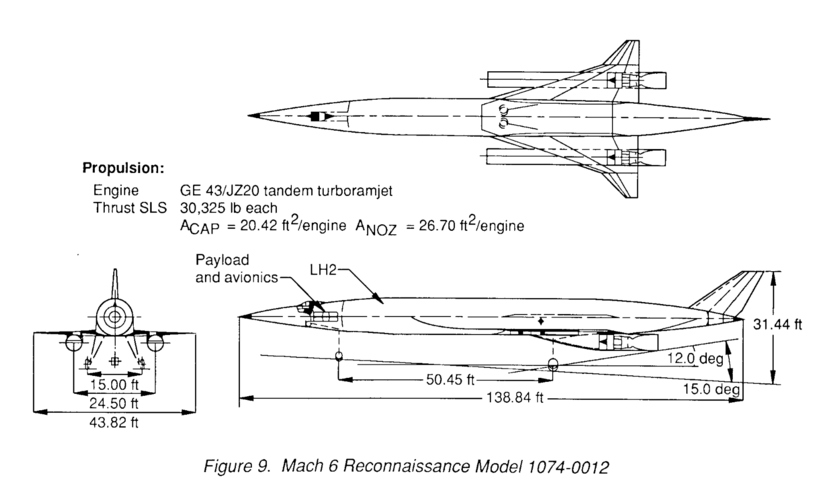Tuomasn
ACCESS: Secret
- Joined
- 5 January 2006
- Messages
- 467
- Reaction score
- 297
I've been fascinated by the first Boeing hypersonic concept in http://www.secretprojects.co.uk/forum/index.php/topic,1041.msg4377.html#msg4377 ever since I first saw it. Unfortunately there doesn't seem to be any more information available, the closest being the Boeing Model 1074-006 that overscan found in http://www.secretprojects.co.uk/forum/index.php/topic,5906.0.html. Due to the similar fuselage shape I assume the first one being a Model 1074 variant also, and, as nothing better seemed to be coming forth, I decided to use the 1074-006 drawings as a base for an attempt to make a 3D model of the first one.
The model is still somewhat of a WIP, in particular the textures. There are some clear problems, for example the fuselage of my model is not "flat" enough and the vertical tails should have more sweep, also there is some artistic licence at places.
One thing that bothers me are the things that look like rocket nozzles at the back of the vehicle in the original image. I can't see a way they could just be nozzles for the turboramjets. ???
Should anyone ever come across anything on this particular design it would be greatly appreciated.
Last, an easy fix when you have an inaccurate model of a real airplane is to slap red stars on it and call it a "MiG-41" thus turning it into a Whif. (ala Rockwell HiMAT & MiG 1.44.)
The model is still somewhat of a WIP, in particular the textures. There are some clear problems, for example the fuselage of my model is not "flat" enough and the vertical tails should have more sweep, also there is some artistic licence at places.
One thing that bothers me are the things that look like rocket nozzles at the back of the vehicle in the original image. I can't see a way they could just be nozzles for the turboramjets. ???
Should anyone ever come across anything on this particular design it would be greatly appreciated.
Last, an easy fix when you have an inaccurate model of a real airplane is to slap red stars on it and call it a "MiG-41" thus turning it into a Whif. (ala Rockwell HiMAT & MiG 1.44.)








